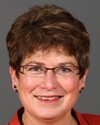moved for leave to introduce Bill C-357, An Act to amend the Hazardous Products Act (noise limit for children's products).
Mr. Speaker, it is a great privilege to present this bill to the House and I heartily recommend its adoption.
The intent of the bill is to lower permissible decibel levels in toys in order to save children from lifelong damage to their hearing. This issue has been brought before us on numerous occasions and it is time for government action. I am recommending this bill but if the government would like to steal the idea and put it into any upcoming legislation that would be fine with me as well.
The bill would bring Canada in line with the World Health Organization's limit of 75 decibels. The Hazardous Products Act currently allows toys with a noise level of 100 decibels. This limit was set back in 1970 and all audiologists agree that this is out of line with current standards.
Some hearing impairment is preventable and we owe it to our children to keep them safe from unnecessary hazards. Hopefully, child safety is an area where we can agree to make minority government work.
(Motions deemed adopted, bill read the first time and printed)

